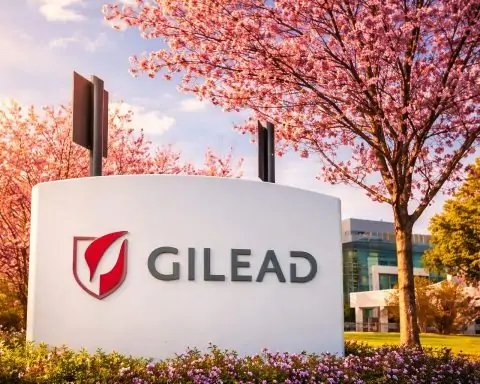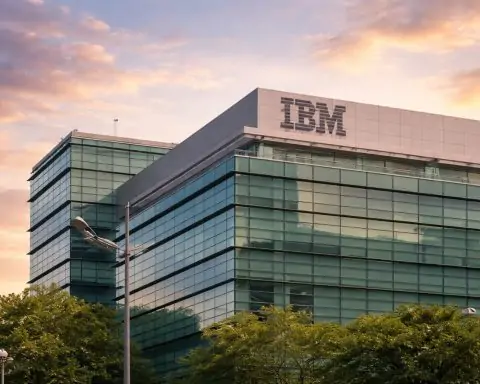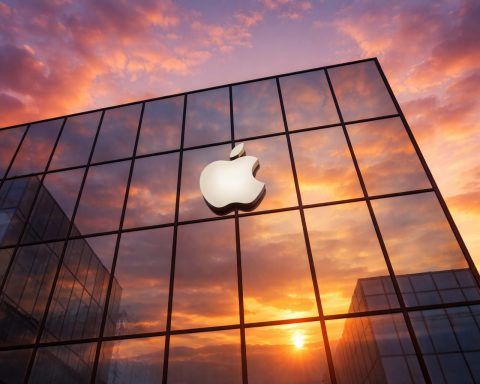Major Research Breakthroughs in AI
- AI Model Tackles Code Vulnerabilities: A team of researchers unveiled White-Basilisk, a new 200-million-parameter AI model for software vulnerability detection that outperforms models over 30× its size [1]. Unlike giant general-purpose LLMs, White-Basilisk uses a hybrid architecture to analyze code sequences up to 128,000 tokens long, enabling whole-codebase scans. Lead researcher Ioannis Lamprou explained that most security flaws “don’t exist in isolation” but span multiple functions or files – a challenge because traditional transformers have “quadratic complexity,” making large code analysis impractical [2]. White-Basilisk’s breakthrough linear attention mechanism achieves linear scaling, allowing efficient long-context analysis and dramatically reducing the compute needed. The compact model was also designed to be energy-efficient, with training emissions of only ~85 kg CO₂ (akin to a few hundred miles of driving) [3]. Lamprou noted the goal is to deploy such AI in tools like IDE extensions and CI pipelines so that even small teams can catch bugs in real time, “no cloud connectivity or powerful hardware required” [4].
- Visualizing Expert Decisions (NTT at ACL 2025): Researchers at NTT in Japan announced the world’s first AI technique to visualize expert decision-making processes from dialogue data with ~90% accuracy [5] [6]. This technology, presented as a Findings paper at ACL 2025, addresses a longstanding operational challenge: transferring the tacit knowledge of veteran workers (e.g. in cybersecurity incident response or call centers) to others. NTT’s system uses LLMs to extract and merge common questions and suggestions from transcripts, then traces how experts navigate from each question to a final solution [7] [8]. By structuring Q&A flows into a tree of frequent decision paths, it creates a visual “playbook” of expert reasoning. The aim is to let novice staff replicate expert-level responses, and eventually to integrate these human decision flows into automated AI agents for customer service [9] [10]. “Moving forward… we aim to achieve automated responses grounded in real operational expertise,” the team stated [11] [12].
- AI-Designed Battery Materials: Scientists at NJIT used generative AI to discover five new porous materials that could revolutionize next-gen batteries [13]. The research, published in Cell Reports Physical Science on July 31, applied a dual-AI approach – a crystal-structure Autoencoder plus a custom LLM – to sift through millions of potential compounds for multivalent (Mg, Ca, Zn, Al) battery electrodes [14] [15]. Multivalent batteries can store more energy than lithium-ion cells, but finding materials that allow the larger, doubly- or triply-charged ions to move freely has been a major hurdle [16]. “One of the biggest hurdles wasn’t a lack of promising chemistries – it was the sheer impossibility of testing millions of material combinations,” explained Prof. Dibakar Datta. “We turned to generative AI as a fast, systematic way to sift through that vast landscape and spot the few structures that could truly make multivalent batteries practical” [17]. The AI models rapidly proposed novel crystal structures with open, sponge-like networks ideal for shuttling bulky ions. Datta reported a “critical breakthrough”: five AI-generated metal-oxide structures with large channels that simulations show can accommodate multivalent ions efficiently [18]. The team validated the candidates’ stability and is now working with labs to synthesize them [19]. Beyond batteries, the researchers herald this as a blueprint for AI-driven discovery in materials science – “a rapid, scalable method to explore any advanced materials… without extensive trial and error” [20].
Corporate Announcements and AI Initiatives
- Apple Ramps Up AI Spending & M&A: Apple’s Q3 earnings call brought an unusually frank commitment to AI. CEO Tim Cook signaled the iPhone maker is ready to “open its wallet” to catch up in AI, even hinting at large acquisitions – a departure from Apple’s traditionally cautious dealmaking [21] [22]. Cook revealed Apple has already bought seven small AI companies this year and is “very open to M&A that accelerates our roadmap… not stuck on [any] size” [23]. This comes as Apple has lagged rivals in launching AI chatbots and assistants. While Microsoft and Google plan to spend ~$85–100B on AI this year, Apple has so far leaned on partners and in-house R&D for features like an improved (but delayed) Siri [24] [25]. Now, Apple plans to significantly increase investment in AI and data centers. CFO Kevan Parekh said capital outlays will “grow substantially” – not exponentially, but well above historical levels – largely due to AI projects [26] [27]. One strategic area under consideration: revamping Apple’s Safari browser with AI capabilities, potentially through an AI-centric search or even by acquiring an AI search startup (Apple was reportedly in talks with Perplexity.ai) [28] [29]. The bottom line: Wall Street got a rare confirmation that Apple is prepared to spend big and even make a “larger player” purchase in AI if needed [30] [31].
- Meta’s ‘Personal Superintelligence’ Vision: Meta CEO Mark Zuckerberg outlined an ambitious new direction: developing “personal superintelligence” – AI that acts as a personal assistant for every user [32]. In a public statement, Zuckerberg said Meta isn’t aiming to build one centralized AI to replace human work, but instead wants “to bring personal superintelligence to everyone” and “put this power in people’s hands to direct it towards what they value in their own lives” [33]. Such AI agents, embedded in devices that “see and hear what we do,” would assist with daily tasks, creativity, and personal development [34]. Meta claims this user-centric approach contrasts with other industry players focused on automating labor or controlling AI in the cloud [35]. Zuckerberg did acknowledge the novel risks of pursuing superintelligent AI, stressing the need to be “rigorous about mitigating these risks” and cautious in what Meta chooses to open-source [36] [37]. “We believe the benefits of superintelligence should be shared as broadly as possible… That said, superintelligence will raise novel safety concerns,” he wrote, underscoring plans to open certain AI technologies while holding back others for safety [38] [39]. Alongside this vision, Meta’s earnings revealed the massive scale of its AI investments. Q2 2025 revenue hit $47.5 billion (up 22% YoY), and capital expenditures surged to $17 billion in one quarter, with full-year infrastructure spend forecast up to $72 billion [40] [41]. Meta expects to sustain that ~$70B+ annual capex pace into 2026, largely for AI data centers and talent. This spending, Zuckerberg argued, is building the foundation for Meta’s next era of AI-driven products – from its metaverse ambitions to this new personal AI initiative. (Notably, Meta also just hired several top AI researchers from OpenAI’s orbit, highlighting the fierce talent war in the field [42].)
- Microsoft & Singapore Launch AI Accelerator: On August 1, Microsoft and Digital Industry Singapore (the government’s tech arm) announced a joint Agentic AI Accelerator to help 300 Singaporean businesses adopt AI [43]. Over the next year, the program will provide each participating company up to S$250,000 in Azure cloud credits, AI training, and tools, plus additional Microsoft consulting support to co-develop AI solutions [44] [45]. The initiative is part of Singapore’s broader Enterprise Compute Initiative and is designed to transform local firms into “Frontier Firms” – organizations where humans work alongside AI agents in hybrid teams [46] [47]. “Frontier Firms are the future – a new type of organisation where teams of humans and AI agents work together, able to scale faster and create value in new ways,” said Cynthia Yeo, Microsoft Singapore’s acting MD [48]. She emphasized Microsoft’s commitment to “making bold investments” so that even SMEs can deploy AI that is “intuitive, secure, and integrated into everyday workflows” [49]. The Singapore government is co-funding portions of the effort (offering S$105k per enterprise for building AI centers of excellence) [50], and the new Microsoft Research Asia lab in Singapore will involve its scientists in mentoring participants [51]. This public-private partnership reflects Singapore’s strategy to upskill industry with AI and echoes similar accelerator programs Microsoft is running globally to drive Azure cloud adoption via AI. At the launch event, Singapore’s trade minister hailed increasing AI access as “pivotal to empowering enterprises to gain competitiveness,” calling Microsoft “forefront of AI and cloud innovation” and lauding the initiative’s potential to uncover “new opportunities from Singapore” [52] [53].
- NTT Data & Mistral AI Forge Global Partnership: In a notable East-West collaboration, Japan’s NTT DATA and France’s startup Mistral AI announced a partnership (Aug 1) to jointly deliver “safe and private” enterprise AI solutions across Europe and Asia [54] [55]. Mistral AI – a much-watched generative AI venture known for its efficient open-weight LLMs – will work with NTT DATA to deploy secure GenAI models tailored for clients in regulated industries like finance, insurance, defense, and government [56] [57]. The goal is to offer large organizations end-to-end AI systems (from infrastructure to applications) that run in private cloud or on-premise environments, addressing data privacy and sovereignty concerns. Initial focus areas include sustainable, “sovereign” AI platforms (e.g. a planned Luxembourg AI platform for financial services) and specialized LLMs for local languages and needs [58] [59]. “Collaborating with Mistral AI to bring trustworthy, impactful AI to market aligns with NTT DATA’s mission to accelerate client success through responsible innovation,” said Abhijit Dubey, CEO and Chief AI Officer of NTT DATA [60]. By “harness[ing] the power of high-performing AI models” alongside NTT’s tech services, he promised “secure, scalable and sustainable deployments for enterprises across the globe” [61] [62]. Mistral’s CEO Arthur Mensch said teaming up with a global IT leader will bring their next-gen models into real business applications, “with a strong focus on organizations that need the highest standards of data privacy in their AI journey.” [63] This alliance highlights a trend of emerging AI startups partnering with incumbents to reach enterprise customers, and underscores the demand for enterprise-grade AI that balances performance with privacy, especially in the EU where data regulations are strict. (One early success: IP firm Dennemeyer chose NTT & Mistral to build an AI tool for advanced patent searches [64].)
Government Policy and AI Governance Updates
- EU’s AI Act – Industry Signs On (Warily): With the EU’s landmark AI Act on track to impose new rules on General Purpose AI (GPAI) starting Aug 2, 2025, a voluntary Code of Practice has been introduced to help companies comply early. This week saw divergent stances from AI players on signing the code. Elon Musk’s xAI announced it will endorse the “Safety and Security” chapter of the EU code, affirming that “xAI supports AI safety” [65]. However, xAI pointedly refused to sign the other two sections (Transparency and Copyright), blasting the EU’s approach: “[The code’s] other parts contain requirements that are profoundly detrimental to innovation and [its] copyright provisions are clearly an over-reach” [66]. In contrast, Alphabet/Google said it will sign the code in full, with Global Affairs President Kent Walker expressing hope that the code will ensure “secure, first-rate AI tools” are available in Europe [67]. But even Google has reservations – Walker warned that departures from existing EU law or overly onerous demands (e.g. requiring disclosure of sensitive training data) “could chill European [AI] development and deployment, harming Europe’s competitiveness” [68]. Microsoft has indicated it will likely sign as well, according to President Brad Smith [69]. Meta Platforms, however, openly declined: Meta argued the voluntary code creates “legal uncertainties for model developers” and “measures which go far beyond the scope of the AI Act.” [70] The EU’s AI Office invited all major model providers to become signatories by Aug 1 (in exchange for regulatory perks like streamlined compliance inspections) [71]. As of August 1, multiple big firms – including OpenAI and Anthropic – are expected on the signatory list, signaling broad industry cooperation even as tensions simmer over how strict AI regulation should be. EU officials view the code and upcoming AI Act as setting a global benchmark for trustworthy AI use [72], while U.S. executives privately worry about Europe’s heavy-handedness potentially stifling innovation. The coming months will test this delicate balance between AI safety and agility, in Europe and beyond.
- U.S. AI Policy – Deregulation vs. Safeguards: In Washington, debate continues over the Trump Administration’s sweeping “American AI Action Plan,” which aims to supercharge U.S. AI development and exports while curbing regulations [73]. The plan’s 90+ proposals include promoting open-source AI models, pouring investment into AI infrastructure, and pushing U.S. AI products to allies abroad [74] [75]. Major tech companies have largely cheered Trump’s pro-innovation stance – notably backing a controversial federal move to preempt state AI laws that could create a patchwork of rules. “Taking AI regulation out of the hands of states” would “free innovation from a panoply of differing requirements,” Google and OpenAI argued in support of a federal preemption clause [76]. However, lawmakers in the U.S. Senate pushed back. In a marathon session, Senators on July 31 struck out a provision in a budget megabill that would have banned states from regulating AI for 10 years [77] [78]. The vote was 99–1 against the moratorium, with even many Republicans insisting on preserving state powers to tackle AI risks. “We can’t just run over good state consumer protection laws,” said Sen. Maria Cantwell, citing states’ rights to fight robocalls, deepfakes, or unsafe autonomous vehicles [79]. Republican governors likewise opposed the moratorium, with Arkansas’s Gov. Sarah Huckabee Sanders saying, “We will now be able to protect our kids from the harms of completely unregulated AI.” [80] Instead of an outright ban, Congress is seeking a compromise that encourages innovation but lets states address clear harms (one idea floated: a 5-year limit and exceptions for things like voice cloning or child safety) [81]. The broader AI Action Plan remains in flux – balancing national security (e.g. export controls on “the highest-end semiconductors” to rivals [82]) with keeping the U.S. “the world’s AI leader.” As this plays out, the White House is also working on AI safety standards and voluntary commitments with AI labs (following the July 2025 summit where leading AI firms pledged to integrate watermarking, external red-team testing, and other safety measures for frontier models). The coming legislation and 2025 election cycle ensure AI governance will stay front and center in U.S. policy debates.
- UK’s Justice System Embraces AI: The UK government announced a bold plan to use AI across prisons, courts, and probation to enhance public safety. On July 31, Justice Secretary Shabana Mahmood launched the Ministry of Justice’s new AI Action Plan as part of a broader “Plan for Change” in criminal justice [83] [84]. A headline initiative: deploying AI in prisons to predict and prevent violence before it happens. An AI violence prediction tool will analyze factors like an inmate’s age, gang affiliation, disciplinary history, and even subtle behavior patterns to identify prisoners at high risk of causing violence [85] [86]. Wardens can then intervene proactively or separate potential aggressors, aiming to “assess threat levels on [prison] wings and intervene… before violence escalates.” [87] [88] Mahmood said AI is already “fighting violence in prisons, tracking offenders, and releasing our staff to focus on what they do best: cutting crime”, calling this tech a force multiplier for safety [89]. Another AI system will scan prisoners’ illicit communications: a tool to digitally read messages on smuggled mobile phones (often used by inmates for gang coordination). The AI can flag suspicious keywords or “secret code words” indicating escape plans, hits on rivals, or contraband smuggling, allowing officers to disrupt plots in advance [90] [91]. In pilot tests, this language AI processed 33,000 seized phones (over 8.6 million messages) and uncovered threats that human inspectors might have missed [92] [93]. “Artificial intelligence will transform the justice system. We are embracing its full potential,” Mahmood declared, framing these steps as crucial to the government’s law-and-order agenda [94]. The MoJ plan also calls for an AI-driven single digital ID for offenders to link court, prison, and probation records (fixing data silos that let criminals slip through cracks) [95]. Early AI pilots in probation showed a 50% reduction in officers’ admin time (note-taking, etc.), freeing them to focus on face-to-face rehabilitation work [96] [97]. The Tony Blair Institute’s director of innovation policy hailed the plan as the kind of “ambition we need… to embrace AI for a genuine renewal of public services,” so long as it is “implemented well and at pace” [98]. The UK’s approach here is noteworthy: while it pushes pro-innovation stances in international AI regulation, domestically it’s racing to deploy AI for governance and public safety, attempting to simultaneously be “tough on AI risks” and bullish on AI’s benefits.
Noteworthy AI Applications & Business Impacts
- AI in Utilities – Preventing Water Outages: In a practical deployment, Southern Water (a major UK water utility) is rolling out an AI-based system to predict equipment failures before they happen [99]. After a successful pilot in 2024, the company announced on Aug 1 that it will install up to 3,500 smart sensors on wastewater pumps across southeast England [100]. Developed by tech firm Samotics, the SAM4 device uses machine learning to continuously monitor vibration, electrical load, and other indicators at a high resolution (20,000 data points per second) [101] [102]. By learning each pump’s “normal” operating profile, the AI can detect the earliest signs of mechanical trouble, electrical faults, or blockages and automatically alert maintenance teams [103] [104]. Southern Water’s Daniel McElhinney said unplanned pump failures can have “a negative impact on our customers [and] the environment and result in increased operational costs. To mitigate this, we are deploying this new AI tool, which provides near real-time data to detect early signs of equipment failure.” [105]. Samotics’ UK head Tom Swain added that their solution is designed for “hard-to-reach pumps” and helps utilities move to condition-based maintenance – fixing infrastructure only when needed, rather than on a fixed schedule [106] [107]. This AI rollout is expected to reduce sewage overflows and service outages by intervening before minor issues become major failures. It’s one of many examples this week of AI being applied in critical infrastructure. (Elsewhere, Water Magazine reports Yorkshire Water is experimenting with AI for leak detection, and power grid operators are testing AI to predict equipment overloads, reflecting a broader trend of AI guarding utilities.)
- AI for Public Health Communication: How fast can AI help respond to emerging health threats? A new Australian study suggests generative AI can greatly speed up public health campaigns. Researchers at University of Queensland reported on Aug 1 that AI-generated anti-vaping ads (co-created with input from youth) were rated as effective or more effective by young adults than traditional health agency ads [108] [109]. The significance: using GenAI to craft messaging could “take years off” the time between recognizing a new health risk and launching a mass media intervention [110] [111]. “Developing effective campaigns is time consuming and there’s often a critical lag between the surfacing of a problem and a health agency’s response,” said Associate Prof. Gary Chan [112]. For example, in Australia the dangers of teen vaping emerged around 2018 but the first national campaign didn’t launch until 2021 [113]. The UQ study found that by leveraging AI image and text generation – guided by target audience feedback – health authorities could iterate ads much faster without losing credibility. Even when test viewers were told certain ads were “made with AI,” they did not rate them worse, suggesting “no negative bias” among young people toward AI-crafted messaging [114] [115]. The researchers caution that the same tech could be misused to produce convincing health disinformation at scale, so they urge “robust regulatory frameworks to ensure transparency.” [116] [117] Nonetheless, this experiment highlights AI’s growing role in public health strategy, not just behind the scenes in drug discovery, but front-facing in communication and education.
- Stock Market Soars on AI Hype: The past 48 hours underscored how AI enthusiasm is driving financial markets. Off the back of strong earnings, the tech-heavy Nasdaq and S&P 500 hit record highs on July 31 as investors piled into AI-exposed stocks [118]. Meta’s and Microsoft’s blockbuster Q2 results – both attributing growth to AI – fanned what one analyst called an “AI frenzy” on Wall Street [119]. Microsoft shares jumped ~4% on Thursday, briefly pushing Microsoft’s market cap above $4 trillion (a milestone only Nvidia had reached before) [120]. Meta’s stock leapt 11.3% in one day, adding about $200 billion to its valuation [121], after it raised revenue forecasts and touted heavy AI investments that are boosting engagement and ad targeting. Even Amazon (which reported more mixed results) highlighted AI as a bright spot – and while Amazon’s stock dipped post-earnings, it noted plans to maintain ~$118B in capex this year (vs. $100B initially) largely due to AI and cloud expansion [122] [123]. Analysts are increasingly convinced that AI is now a “primary growth engine” for Big Tech [124] [125]. “As companies like Alphabet and Meta race to deliver on the promise of AI, capital expenditures are shockingly high and will remain elevated for the foreseeable future,” observed Debra Aho Williamson of Sonata Insights [126]. “But if their core businesses remain strong, it will buy them more time with investors and provide confidence that the billions being spent… will be worthwhile,” she added [127] [128]. Those core businesses do appear strong: Microsoft revealed that over 100 million users now use its new AI Copilot features across Office and other apps [129] [130], and Google disclosed its upcoming Gemini AI assistant already has 450 million monthly users in beta [131]. Even OpenAI’s ChatGPT, the poster child of generative AI, boasts ~500 million weekly active users, a staggering figure for a product less than 2 years old [132]. Such numbers have eased investor worries about whether AI usage would monetize. “It’s the kind of result that quickly silences any doubts about cloud or AI demand,” said eToro analyst Josh Gilbert, referring to Microsoft’s Azure growth and AI uptake [133] [134]. One fund manager proclaimed, “The big boys are back… the Magnificent Seven [tech giants] are still magnificent,” as AI excitement helps big tech defy broader economic headwinds [135].
- VC Funding Frenzy – New AI Unicorns: The AI startup ecosystem saw major funding rounds as investors continue to chase the next big AI winners. On July 31, Anaconda, a company providing popular open-source Python tools for AI developers, announced a $150 million Series C led by Insight Partners, valuing it at roughly $1.5 billion [136] [137]. The Austin-based Anaconda (known for its Python distribution and ML packages) is profitable with $150M+ ARR, and will use the cash to build an enterprise AI platform, pursue acquisitions, and expand internationally [138] [139]. “The funding comes amid increased competition in enterprise AI software, with Python continuing to dominate as the language of choice for AI development,” the company noted [140] [141]. Just hours earlier, San Francisco startup Fal (stylized fal) announced its own $125 million Series C (led by Meritech, with Google’s AI fund and others participating) – also landing at a $1.5 billion valuation [142] [143]. Fal specializes in AI infrastructure for generative media: it runs image, video, and audio generation models for enterprise clients who need more than just text-based AI [144] [145]. The popularity of tools like DALL-E and Midjourney has created demand from marketing and e-commerce teams to generate visuals at scale. “With generative AI, you can create infinite iterations of the same ad,” said Burkay Gur, fal’s CEO, explaining how companies use it to tailor ads to different demographics and A/B test creatives endlessly. “There is incremental value on each asset that you create,” he told Reuters [146] [147]. Fal’s platform saw a usage spike after ChatGPT’s image generation feature went viral in April, pushing ChatGPT’s weekly user count past 150 million [148] [149]. Both Anaconda and fal exemplify how the AI gold rush is lifting a wide range of startups – from developer tool providers to model-as-a-service platforms – into the unicorn club. According to PitchBook data, overall U.S. startup funding surged 75.6% in H1 2025 year-on-year, on track for the second-biggest year ever, largely thanks to the AI boom [150] [151]. Nearly $70 billion poured into U.S. startups in just the last three months, much of it chasing generative AI ventures that barely existed a year ago [152]. Venture capital firms, even as they struggle to raise new funds, are concentrating bets on AI – hoping one of these new entrants could be the next OpenAI or Nvidia.
- Reddit’s AI Ads Boost – and an Analyst’s Quip: Social media site Reddit (which IPO’d in 2024) gave a vivid example of AI driving business results. In its Q2 report on July 31, Reddit said revenue jumped 78% year-on-year to $500 million, far above expectations [153] [154]. It credited AI-powered advertising tools for attracting marketers and increasing ad effectiveness. The company has rolled out features that let brands target “conversation placements” in relevant subreddit discussions and use generative AI to craft ad copy that resonates with each community [155] [156]. “Advertisers are increasingly turning to platforms such as Reddit, Meta, and TikTok, which offer advanced AI-powered tools for ad creation,” the report noted [157] [158]. Reddit’s Chief Operating Officer Jen Wong highlighted that while the platform’s active advertiser count is growing, “most of our growth still comes from existing advertisers that are well retained” thanks to these AI tools driving results [159] [160]. The company also has lucrative data licensing deals, allowing Google and OpenAI to train their models on Reddit content (providing an additional AI-linked revenue stream) [161] [162]. Looking ahead, Reddit issued a bullish forecast for Q3 – $535–545M revenue, which is ~15% above analyst consensus [163] [164] – again citing AI-driven ad demand. In after-hours trading, Reddit’s stock soared 16% on the news [165] [166]. The results even earned Reddit a cheeky compliment from an industry watcher: “Reddit just turned in a quarter that would make even its harshest subreddit proud,” joked eMarketer analyst Jeremy Goldman, alluding to Reddit’s often-critical user base [167]. The strong performance suggests Reddit’s “AI-first” strategy (as dubbed by CEO Steve Huffman earlier this year) is paying off – and it mirrors the ad resurgence seen at Meta, where AI recommendations have boosted engagement on Instagram. On the flip side, content creators and moderators have raised concerns about Reddit’s AI moves (the site faced protests in July over API changes related to data scraping), showing the tension between monetizing AI and community goodwill. Nonetheless, for now investors are clearly rewarding anything with a convincing AI growth story.
In sum, the last two days brought a flood of AI developments: breakthrough research in security (AI spotting code bugs and prison threats) and science (AI designing battery materials and health campaigns), major corporate bets (Apple loosening its purse strings, Meta doubling down on an AI future, Microsoft and NTT launching global AI programs), significant policy maneuvers (the EU corralling AI firms into a code of conduct, the US grappling with how to govern AI without throttling it), and continued market euphoria around all things AI (with stocks and startups alike reaching new heights). It’s a vivid snapshot of the AI revolution in mid-2025: frenetic, multi-faceted, and touching every arena from Big Tech boardrooms to government corridors to research labs. As AI advances at breakneck speed, expect the news cycle to be just as intense in the days to come.
Sources: Major news outlets, press releases, and official reports from July 31 & Aug 1, 2025, including Reuters [168] [169] [170] [171], company statements [172] [173], and government briefings [174] [175]. All quotes are drawn from the cited sources.
References
1. www.helpnetsecurity.com, 2. www.helpnetsecurity.com, 3. www.helpnetsecurity.com, 4. www.helpnetsecurity.com, 5. group.ntt, 6. group.ntt, 7. group.ntt, 8. group.ntt, 9. group.ntt, 10. group.ntt, 11. group.ntt, 12. group.ntt, 13. news.njit.edu, 14. news.njit.edu, 15. news.njit.edu, 16. news.njit.edu, 17. news.njit.edu, 18. news.njit.edu, 19. news.njit.edu, 20. news.njit.edu, 21. www.reuters.com, 22. www.reuters.com, 23. www.reuters.com, 24. www.reuters.com, 25. www.reuters.com, 26. www.reuters.com, 27. www.reuters.com, 28. www.reuters.com, 29. www.reuters.com, 30. www.reuters.com, 31. www.reuters.com, 32. qazinform.com, 33. qazinform.com, 34. qazinform.com, 35. qazinform.com, 36. qazinform.com, 37. qazinform.com, 38. qazinform.com, 39. qazinform.com, 40. qazinform.com, 41. qazinform.com, 42. qazinform.com, 43. news.microsoft.com, 44. news.microsoft.com, 45. news.microsoft.com, 46. news.microsoft.com, 47. news.microsoft.com, 48. news.microsoft.com, 49. news.microsoft.com, 50. news.microsoft.com, 51. news.microsoft.com, 52. news.microsoft.com, 53. news.microsoft.com, 54. technode.global, 55. technode.global, 56. technode.global, 57. technode.global, 58. technode.global, 59. technode.global, 60. technode.global, 61. technode.global, 62. technode.global, 63. technode.global, 64. technode.global, 65. www.reuters.com, 66. www.reuters.com, 67. www.reuters.com, 68. www.reuters.com, 69. www.reuters.com, 70. www.reuters.com, 71. cadeproject.org, 72. www.reuters.com, 73. www.nextgov.com, 74. www.reuters.com, 75. cepa.org, 76. www.reuters.com, 77. www.reuters.com, 78. www.reuters.com, 79. www.reuters.com, 80. www.reuters.com, 81. www.reuters.com, 82. www.nextgov.com, 83. www.gov.uk, 84. www.gov.uk, 85. www.gov.uk, 86. www.gov.uk, 87. www.gov.uk, 88. www.gov.uk, 89. www.gov.uk, 90. www.gov.uk, 91. www.gov.uk, 92. www.gov.uk, 93. www.gov.uk, 94. www.gov.uk, 95. www.gov.uk, 96. www.gov.uk, 97. www.gov.uk, 98. www.gov.uk, 99. www.watermagazine.co.uk, 100. www.watermagazine.co.uk, 101. www.watermagazine.co.uk, 102. www.watermagazine.co.uk, 103. www.watermagazine.co.uk, 104. www.watermagazine.co.uk, 105. www.watermagazine.co.uk, 106. www.watermagazine.co.uk, 107. www.watermagazine.co.uk, 108. news.uq.edu.au, 109. news.uq.edu.au, 110. news.uq.edu.au, 111. news.uq.edu.au, 112. news.uq.edu.au, 113. news.uq.edu.au, 114. news.uq.edu.au, 115. news.uq.edu.au, 116. news.uq.edu.au, 117. news.uq.edu.au, 118. www.reuters.com, 119. www.reuters.com, 120. www.reuters.com, 121. www.reuters.com, 122. www.reuters.com, 123. www.reuters.com, 124. www.reuters.com, 125. www.reuters.com, 126. www.reuters.com, 127. www.reuters.com, 128. www.reuters.com, 129. www.reuters.com, 130. www.reuters.com, 131. www.reuters.com, 132. www.reuters.com, 133. www.reuters.com, 134. www.reuters.com, 135. www.reuters.com, 136. www.reuters.com, 137. www.reuters.com, 138. www.reuters.com, 139. www.reuters.com, 140. www.reuters.com, 141. www.reuters.com, 142. www.reuters.com, 143. www.reuters.com, 144. www.reuters.com, 145. www.reuters.com, 146. www.reuters.com, 147. www.reuters.com, 148. www.reuters.com, 149. www.reuters.com, 150. www.reuters.com, 151. www.reuters.com, 152. www.reuters.com, 153. www.reuters.com, 154. www.reuters.com, 155. www.reuters.com, 156. www.reuters.com, 157. www.reuters.com, 158. www.reuters.com, 159. www.reuters.com, 160. www.reuters.com, 161. www.reuters.com, 162. www.reuters.com, 163. www.reuters.com, 164. www.reuters.com, 165. www.reuters.com, 166. www.reuters.com, 167. www.reuters.com, 168. www.reuters.com, 169. www.reuters.com, 170. www.reuters.com, 171. www.reuters.com, 172. news.microsoft.com, 173. qazinform.com, 174. www.gov.uk, 175. www.gov.uk










